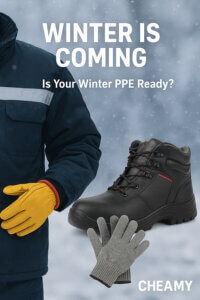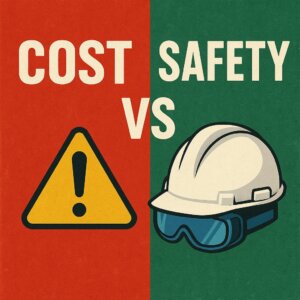Emergency rescue work is inherently dangerous. Whether it’s fires, earthquakes, traffic accidents, or chemical spills, rescue personnel face serious risks. In these high-risk situations, personal protective equipment (PPE) is not just “armor” for rescuers—it is a crucial factor in ensuring both efficiency and safety. But which PPE items are truly critical in emergency rescue operations? Let’s take a closer look.
Head Protection: Helmets Are Essential
On a rescue site, falling objects, impacts, or extreme heat pose significant threats to the head. A properly fitted helmet or fire-resistant hard hat can effectively reduce these risks. Key factors to consider include impact resistance, heat resistance, and comfort. Adjustable and lightweight designs allow rescuers to wear them for extended periods without fatigue, balancing safety and mobility.
Eye and Face Protection: Goggles and Face Shields
Rescue environments often contain smoke, dust, or splashing chemicals that can harm the eyes and respiratory system. Goggles, face shields, and respiratory masks provide essential protection. When choosing, look for anti-fog, scratch-resistant, and chemical splash-resistant features, and ensure compatibility with helmets. Eye and face protection not only safeguards vision but also helps maintain clear sightlines, improving overall rescue efficiency.
Hand Protection: Flexibility Meets Durability
Rescue operations often require handling debris, cutting obstacles, or contacting hazardous materials, making hand protection critical. Cut-resistant gloves, chemical-resistant gloves, and fire-resistant gloves protect hands from injury. Key selection points include durability, grip, and dexterity, ensuring protection without compromising precision.
Foot Protection: Safety Shoes for Stability
Walking on debris, slippery surfaces, or uneven terrain makes foot protection essential. Puncture-resistant shoes and anti-slip safety boots prevent injuries from sharp objects and reduce the risk of slips. Look for waterproof, anti-slip, durable, and comfortable designs to allow rescuers to move safely in any environment.
Body and Torso Protection: Protective Clothing and High-Visibility Gear
In emergency rescue, fire-resistant clothing, chemical suits, and high-visibility vests are must-haves. They protect the torso from heat, chemicals, or impacts while increasing visibility in low-light or night conditions. Important factors include durability, flame resistance, and freedom of movement.
Specialized Equipment: Handling Unique Situations
Depending on the mission, additional PPE such as respirators, earplugs, headlamps, and safety ropes may be required. These specialized tools provide targeted protection and support, enabling rescuers to operate safely and efficiently in complex and hazardous environments.
Proper Use and Maintenance: Maximizing PPE Effectiveness
No matter how advanced the equipment is, improper use or poor maintenance can reduce its protective effect. Rescue teams should establish PPE usage guidelines, conduct regular inspections, replace damaged equipment, and provide targeted training. This ensures every piece of PPE performs as intended.
Conclusion
Emergency rescue environments are unpredictable and hazardous. PPE is the core of ensuring the safety of rescue personnel. From head, eye, hand, and foot protection to body gear and specialized equipment, each piece is indispensable. Proper selection, correct use, and regular maintenance are key to maximizing PPE effectiveness. PPE is not just equipment—it is the foundation of safety and the cornerstone of successful rescue operations.








